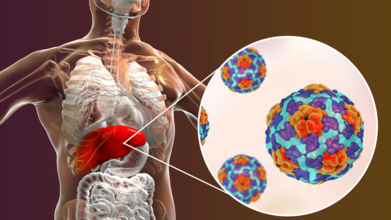- Health Conditions A-Z
- Health & Wellness
- Nutrition
- Fitness
- Health News
- Ayurveda
- Videos
- Medicine A-Z
- Parenting
- Web Stories
World Physical Therapy Day: Know The Multifaceted Benefits Of Physiotherapy

Physiotherapy (Credit: Canva)
World Physical Therapy Day is marked on September 8 every year to recognize the dedicated efforts of physiotherapists and highlight the essential role of physical therapy in enhancing quality of life. The day celebrates the significant contributions of physiotherapists in helping individuals recover from injuries, manage chronic conditions, and improve overall well-being. By bringing attention to the benefits of physical therapy, World Physical Therapy Day underscores its importance in promoting health, mobility, and independence for people of all ages.
Multifaceted Benefits Of Physiotherapy
One of the primary advantages is improved flexibility. During physiotherapy sessions, targeted stretching and strengthening exercises help release tight muscles and bolster weaker ones. This not only improves joint mobility but also makes physical activities more enjoyable and less painful, which is especially beneficial for individuals with demanding lifestyles.Physiotherapy also plays a crucial role in injury prevention. Active individuals, particularly those who engage in regular workouts, are prone to injuries. Physiotherapists assess your body to identify potential weaknesses that could lead to injuries. By addressing muscle imbalances, optimizing joint alignment, and refining body mechanics, they help you perform movements more safely. This proactive approach significantly reduces the risk of common injuries such as sprains, strains, and ligament tears.
Strength building is another key aspect of physiotherapy. Rather than focusing solely on rehabilitation, physiotherapists design customized sessions to target specific muscle groups that need strengthening. These exercises improve endurance and overall strength, enhancing your performance in various physical activities.
Posture enhancement is yet another benefit of physiotherapy. Poor posture can lead to muscle imbalances and unnecessary strain on your body. Physiotherapy helps correct these issues by strengthening core muscles and ensuring proper alignment of the spine and joints. Good posture not only mitigates the risk of injury but also improves movement efficiency, which is crucial for optimal physical performance.
Finally, physiotherapy accelerates recovery after injuries or surgeries. It aids in faster healing by improving blood circulation, reducing stiffness, and promoting tissue repair. Continuing physiotherapy even after initial recovery helps maintain your physical health, ensuring that your body remains in peak condition.
PTSD In Combat Veterans Could Be Treated With This African Drug - Study Finds

(Credit-Canva)
Being in the military means you may witness things or be involved in combat or missions that are life-threatening and horrible to deal with. There are accidents, training injuries, or difficult situations that place them under immense stress. All of these things lead to PTSD, or post-traumatic stress disorder. According to the US National Center for PTSD, at some point in their lives, 7 out of 100 veterans will have PTSD. This number increases to 13 for the female veterans. Dealing with this can take a lifetime, with them experiencing symptoms for years.
Combat veterans also often struggle with anxiety, and depression after experiencing traumatic brain injuries (TBI). These struggles can leave them feeling hopeless and even suicidal. However, a surprising new treatment might offer hope: a psychedelic drug called ibogaine.
How Ibogaine Might Help
Ibogaine comes from the roots of an African shrub. A recent study, published in Nature Mental Health, suggests that this drug can safely and effectively treat the long-term effects of TBI in veterans. Thirty veterans took part in the study, traveling to Mexico for the treatment because ibogaine is not legal in the U.S.
Researchers discovered that ibogaine changes brain activity in ways that can reduce stress and help veterans better deal with their past trauma. A lead researcher from Stanford Medicine noted that no other drug has been able to ease the brain and mental health symptoms of TBI in this way. He called the results "dramatic" and plans to study the compound further.
What Ibogaine Is?
People who take ibogaine often say the experience is like a "waking dream," where they think about memories and see strong images. This compound is used in African religious ceremonies and has also been looked at as a possible treatment for depression and to help people overcome drug addiction.
Journey to Mexico and Positive Outcomes
For this study, researchers worked with a small group of 30 special operations veterans. These veterans had lasting symptoms from TBIs and had been exposed to many explosions. The veterans chose to receive ibogaine treatment at a clinic in Mexico on their own. The clinic gave them ibogaine by mouth, with medical supervision. They also received a dose of magnesium, which helps prevent heart problems sometimes linked to the drug.
Before the treatment, doctors from Stanford checked the veterans. Many had PTSD, anxiety, or issues with alcohol. About half had thought about suicide at some point, and some had even attempted it. Within just one month of ibogaine treatment, the improvements were significant:
- PTSD symptoms dropped by 88%
- Depression symptoms dropped by 87%
- Anxiety symptoms dropped by 81%
The veterans also reported less disability and better focus, thinking skills, memory, and impulse control. Another veteran in the study, who served in the U.S. Navy for 27 years, shared that his thinking abilities were "fully restored" after ibogaine, which helped him at work and improved his family life.
How Ibogaine Changes the Brain
Brain scans helped researchers understand why the drug might be effective. Veterans whose planning and organizing skills improved after treatment showed an increase in certain brain waves called theta rhythms. Stronger theta rhythms might help the brain adapt and be more flexible. Similarly, those with fewer PTSD symptoms showed less complicated brain activity, suggesting the drug helps calm the intense stress response associated with PTSD. These brain scans might also help doctors find out which patients would benefit most from ibogaine.
The study reported no serious side effects, and no heart problems occurred. Veterans did mention typical symptoms like headaches and nausea during treatment.
Partly because of these positive findings, Texas recently approved a $50 million plan to fund more studies of ibogaine. This program will help match private money for ibogaine trials, which could lead to the drug being approved by the U.S. Food and Drug Administration (FDA).
Researchers believe ibogaine could become a broader drug for brain recovery. They think it works on unique brain pathways and could help us better understand how to treat other forms of PTSD, anxiety, and depression that aren't necessarily connected to TBI.
‘Don’t Ignore That Itch’: 4 Skin Clues Linked To Liver Disease, Warns Harvard Doctor

Credits: Canva
The liver is one of the largest and hardest-working organs in the human body. It plays a crucial role in keeping you healthy by filtering toxins from the blood, aiding digestion, storing energy, and performing hundreds of other vital tasks. When this powerhouse organ becomes damaged or starts to underperform, your body often gives off warning signs, and some of the earliest clues can show up on your skin.
Liver disease is a progressive condition that, if left untreated, can lead to serious complications such as cirrhosis or liver failure. The good news is that catching it early makes a big difference. According to experts, there are visible skin changes you can notice yourself that might hint at underlying liver trouble.
Here are four skin-related signs that could point to liver disease and why they happen, as per Dr Saurabh Sethi, MD, MPH, board-certified gastroenterologist, hepatologist, and interventional endoscopist trained at AIIMS, Harvard and Stanford.
Yellowing of the Skin and Eyes (Jaundice)
This is perhaps the most well-known sign of liver issues. Jaundice occurs when bilirubin, a yellowish pigment produced during the breakdown of red blood cells, builds up in the body. Normally, the liver processes bilirubin and flushes it out. But when the liver is damaged or inflamed, this process is disrupted, leading to yellowing of the skin and the whites of the eyes. If you or someone you know notices this change, it’s a strong signal to get checked.
Spider Angiomas (Spider-like Blood Vessels)
These are small, web-like clusters of dilated blood vessels that often appear on the face, neck, upper chest, or arms. They get their name because they resemble tiny red spiders just under the surface of the skin. In liver disease, they tend to appear due to increased estrogen levels in the body, which the liver normally helps regulate. Their presence could be more than just a cosmetic concern—it may be a sign of liver dysfunction.
Palmar Erythema (Red Palms)
Palmar erythema refers to redness and sometimes swelling of the palms, particularly around the base of the thumb and little finger. This condition is also linked to elevated estrogen levels in the bloodstream and increased blood flow, both of which may result from impaired liver function. It can be a subtle symptom that’s easy to miss, but it’s worth noting if it persists without another explanation.
Unexplained Itching, Especially at Night
If you're experiencing persistent itching that doesn’t seem to have a clear cause, and particularly if it gets worse at night, it could be linked to liver disease. This type of itching often stems from the buildup of bile salts under the skin, which happens when the liver struggles to eliminate waste properly. Unlike typical skin conditions, liver-related itching usually doesn't come with a rash, which makes it even trickier to identify.
Understanding Liver Disease and Its Stages
Chronic liver disease doesn’t develop overnight. According to the Cleveland Clinic, it typically progresses through four key stages: hepatitis (inflammation), fibrosis (mild scarring), cirrhosis (advanced scarring), and eventually liver failure if left untreated.
Globally, liver disease is responsible for around 2 million deaths each year, roughly 4 percent of all deaths. In the U.S., it affects about 4.5 million adults, with men being diagnosed almost twice as often as women.
Why Early Detection Matters
Many symptoms of liver disease can be subtle or easily mistaken for other conditions. That’s why it’s so important to pay attention to changes in your body, especially your skin. If you notice any of these signs, consider speaking to a healthcare provider. Early detection and proper management can help prevent the disease from progressing and protect your long-term health.
Hepatitis Day 2025: Is Hepatitis On A Decline Or Still A Cause Of Concern?

Credits: Canva
On World Hepatitis Day today, the spotlight is on one of the most misunderstood but critical public health challenges, viral hepatitis. Observed annually on July 28, this global awareness day focuses on liver inflammation that can silently progress into liver cirrhosis or cancer.
This year’s theme, “Hepatitis: Let’s Break It Down,” urges dismantling financial, social, and systemic barriers that prevent people from seeking testing, vaccination, and treatment.
The World Health Organization (WHO) continues to call for unified action to eliminate hepatitis as a public health threat by 2030.
Also Read: 5 Surprisingly Easy Things You Can Do Daily to Start Reversing Fatty Liver
But how far have we come in achieving that goal? A look at the data and expert insights reveals a mixed picture.
Hepatitis A on the Rise Among Adults
Traditionally associated with childhood jaundice, hepatitis A is now emerging as a more serious threat, especially in urban adults. Doctors in Mumbai report a rise in severe adult hepatitis A cases, including complications like liver failure. As hygiene standards improved in metros, fewer people were exposed to the virus in early childhood, leaving them without natural immunity. This means adults now face more aggressive symptoms when exposed through contaminated food or water, often during the monsoon season.
Pregnant women, too, are being impacted. In one case, a woman admitted for what appeared to be morning sickness was found to have hepatitis A. Doctors emphasize that hepatitis A can affect both mother and baby, and early diagnosis is crucial.
Hepatitis C Cases Drop Thanks to Free Treatment
There is, however, good news when it comes to hepatitis C. Since 2018, India’s National Viral Hepatitis Control Programme has made direct-acting antiviral treatments freely available. These drugs offer a full cure in just three months. As a result, new hepatitis C infections have declined significantly in both public and private hospitals.
In Maharashtra alone, over 28 lakh people were tested for hepatitis C in 2024-2025, out of which 9,476 tested positive. More than 2,000 people were started on treatment. Compared to 1,339 reported cases in 2021-2022, this rise in diagnosis doesn’t necessarily indicate more infections — instead, it reflects better testing and surveillance. Experts credit this progress to improved blood screening protocols and increased awareness around the dangers of needle sharing.
Hepatitis B Still a Serious Threat
Despite medical advancements, hepatitis B remains a major concern. Often referred to as one of the most infectious viruses, it affects millions and is known for its ability to stay dormant and reactivate. While it isn’t curable yet, it is manageable with long-term antiviral therapy. Unfortunately, lack of early symptoms means many people are diagnosed only when serious liver damage has already occurred.
Data from Maharashtra shows an alarming increase in hepatitis B cases, from 9,000 in 2021-2022 to 65,000 last year. This includes 23,000 pregnant women, highlighting the virus’s continued prevalence and risk of mother-to-child transmission. In some cases, patients have even required liver transplants due to delayed diagnosis and treatment.
Testing and Vaccination Are the Need of the Hour
Advances in diagnostics are changing the game. Portable machines like Truenat are making it easier to test for hepatitis viruses in remote areas. Maharashtra saw a 150% rise in hepatitis B testing and a fivefold increase in hepatitis C testing from 2023-24 to 2024-25. The central government is reportedly planning to install Truenat machines in all 40,000 primary health centres across the country in the next two years.
Vaccines for hepatitis A and B are available and effective, yet coverage remains uneven. Experts strongly advise vaccination for high-risk individuals and routine screening for hepatitis B surface antigen (HBsAg) and anti-HCV antibodies. These simple blood tests can be lifesaving when followed up with further tests to assess viral load.
Dr. Somnath Mukherjee, gastroenterologist at CMRI Kolkata, points out that hepatitis continues to be “one of the least understood global health challenges”, despite being preventable, treatable, and in some cases, curable.
He emphasizes the need to dismantle ignorance and stigma around testing and treatment. “World Hepatitis Day provides an opportunity to simplify awareness and dismantle barriers to infection awareness and elimination,” he says. His message is clear: Get tested. Get treated. Get protected.
Hepatitis 101
Hepatitis, caused by viruses labeled A through E, can often go unnoticed until significant liver damage has occurred. “Hepatitis B and C are the most dangerous,” explains Dr. Somnath Mukherjee, noting that these infections can silently progress to liver failure, cirrhosis, or even liver cancer if untreated.
While Hepatitis A and E typically spread through contaminated food or water—often in areas with poor sanitation—B and C are more commonly transmitted via unsafe blood transfusions, shared needles, or unprotected sex.
Symptoms, if they appear at all, might include fatigue, jaundice, dark urine, pale stools, abdominal swelling, or itching. “Waiting for symptoms is pointless,” he stresses, as most infections are asymptomatic.
The good news, however, is that hepatitis is preventable and treatable. Vaccines are available for Hepatitis A and B, and Hepatitis C is now curable with a three-month oral medication.
Though Hepatitis B isn’t curable yet, it is manageable with antiviral drugs. “Screening is crucial,” says Dr. Mukherjee, recommending simple blood tests like the Hepatitis B surface antigen (HBsAg) and Anti-HCV antibody, especially for those at higher risk.
© 2024 Bennett, Coleman & Company Limited




